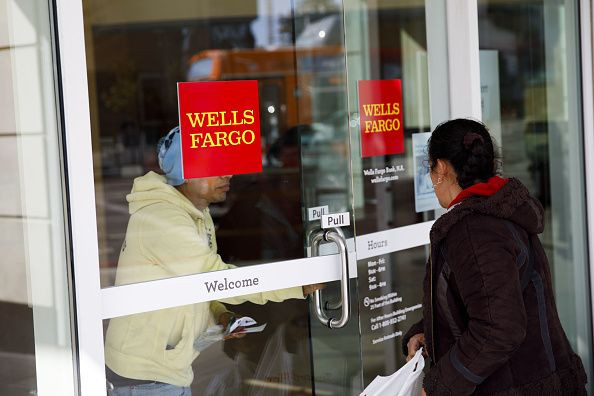Here's How Wells Fargo CEO Tim Sloan Plans To Move Forward

Wells Fargo (NYSE:WFC) has had an eventful couple of years, and not in a good way. The bank's public perception has been rocked by three major scandals, including the infamous fake-accounts scandal, which has not only resulted in sub-par business performance, but has resulted in a string of penalties, fines, and consumer refunds as well.
This article originally appeared in the Motley Fool.
Recently, Wells Fargo issued its 2017 annual report, which is entitled Rebuilding Trust. In the report, the annual letter from CEO Tim Sloan outlined the bank's efforts to repair itself. Here's what Sloan had to say about the bank's post-scandal efforts, the Federal Reserve's action against the bank, and what has been done thus far to correct the problem.
A year of transformation
"This was a year of transformation at Wells Fargo," said Sloan, continuing: "Our top priority remains rebuilding the trust of our customers, team members, communities, regulators, and shareholders. We have made foundational changes to identify and fix problems so they do not happen again and achieved significant progress in our commitment to make things right for our customers and build a better bank."
The Federal Reserve penalty
One of the most significant developments in Wells Fargo's saga, especially from an investor's perspective, is the Federal Reserve's unprecedented penalty.
If you aren't familiar, the Fed essentially says that Wells Fargo isn't allowed to grow beyond its asset level at the end of 2017 until "substantial improvements" are made. Sloan writes: "We take very seriously the consent order we entered into with the Board of Governors of the Federal Reserve System in February 2018, and we will work diligently, yet swiftly, to meet the requirements."
Now, the Fed's language is rather vague. After all, the phrase "substantial improvements" is certainly open to interpretation. However, Sloan did give some color in regards to what happens next: "Under the terms of the consent order, the company will submit plans to the Federal Reserve within 60 days that detail our completed and planned actions to further enhance the board's governance oversight and the company's compliance and operational risk management program. After Federal Reserve approval, the company will engage independent third parties to conduct a review to be completed no later than Sept. 30, 2018."
What exactly has Wells Fargo changed?
"The first step toward building a better Wells Fargo was to take actions to address our challenges," Sloan wrote.
In his letter, Sloan outlined some of the changes Wells Fargo has made thus far to correct its sales practices, repair its image, and to become a generally more consumer-friendly bank.
So far, Wells Fargo has:
- Eliminated product sales goals for retail bankers.
- Implemented a new incentive program, driven by customer experiences, teamwork, and oversight -- as opposed to simply meeting sales targets.
- Strengthened risk and compliance controls.
- Established a Conduct Management Office.
- Simplified the leadership structure in the community banking division, with the goal of creating fewer layers between leadership and retail bankers.
- Automatic notifications when a customer opens a new checking, savings, or credit card account.
- Started a "mystery shopper" program to ensure that retail sales and service practices are working as intended. The program involves 15,000 to 18,000 visits per year.
In addition, the bank has made several consumer-friendly changes. As Sloan wrote: "For example, in March we introduced automatic zero balance alerts, and we now send more than 18 million real-time alerts a month, enabling our customers to make a deposit or transfer so they don't overdraw their account. In November, we introduced Overdraft Rewind, which in its first two months helped more than 350,000 direct-deposit customers avoid overdraft charges by including direct deposits received by 9 a.m. the next day in a reevaluation of the prior day's transactions which resulted in a fee."
To be clear, these changes will certainly cost the bank money, at least in the short run. The Overdraft Rewind initiative, for example, could put a big dent in the bank's fee income. The hope is that over time, these features will be attractive to consumers and will pay for themselves in terms of the amount of new and retained business they can produce.
Take Sloan's optimism with a grain of salt
Sloan ended his letter by saying that Wells Fargo is a better company now than it was a year ago, and that he's confident the improvement will continue. He also pointed out that this isn't the first challenge Wells Fargo has had to overcome in its 166-year history.
While I applaud Sloan's optimism, it's important to take it with a big grain of salt at this point.
For starters, can you remember the last time a CEO wasn't optimistic about their turnaround efforts in an annual letter to shareholders?
Also, Sloan is right. There is lots of work to be done. Wells Fargo is still in the relatively early stages of rebuilding the public's (and regulators') trust, and it's still not too clear what the Federal Reserve is looking for in terms of improvements.
The bottom line is that Wells Fargo is certainly taking steps in the right direction, but investors should remain cautious for the time being until the bank is allowed to grow once again, and the numbers start to reflect that the turnaround is really working.
Matthew Frankel has no position in any of the stocks mentioned. The Motley Fool has no position in any of the stocks mentioned. The Motley Fool has a disclosure policy.





















